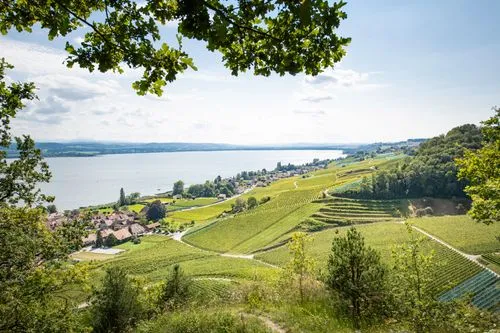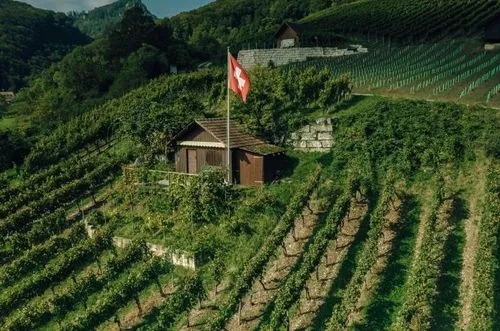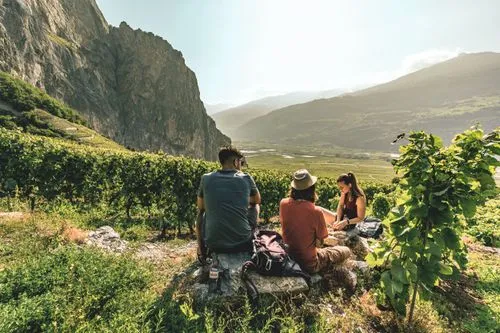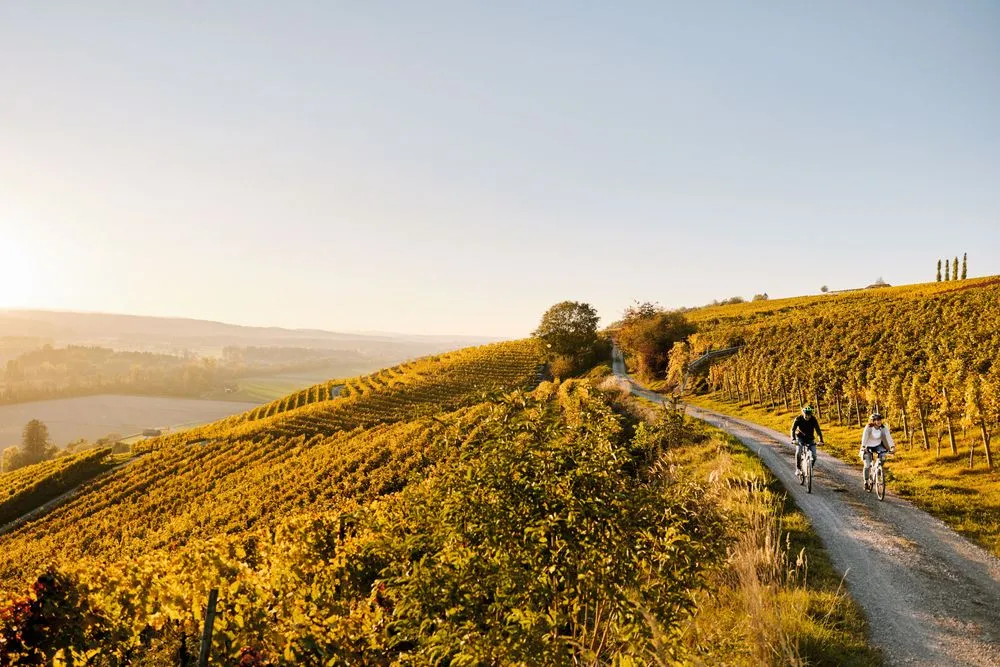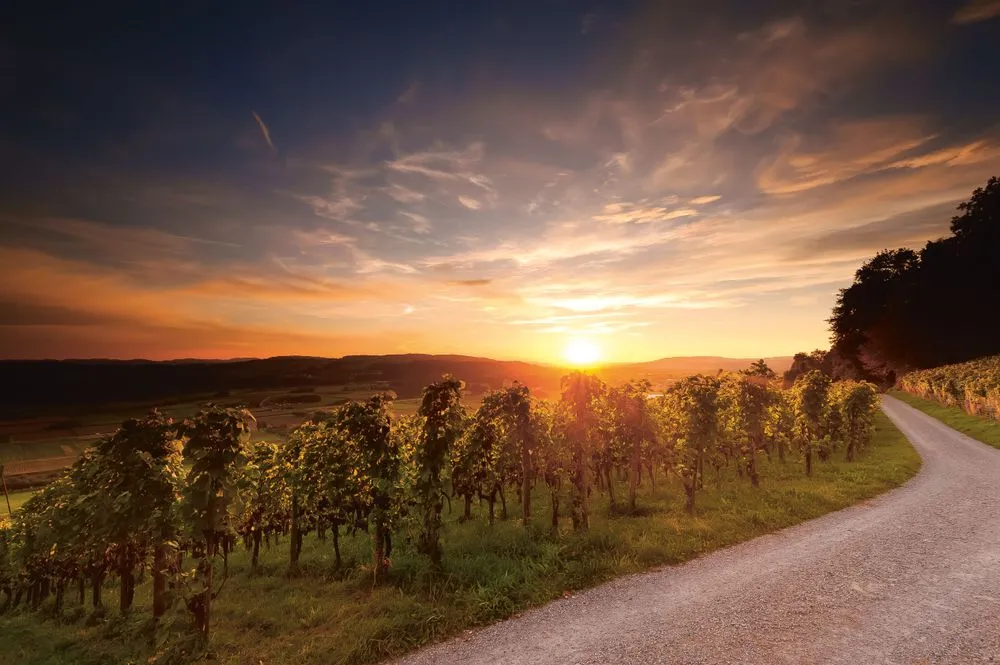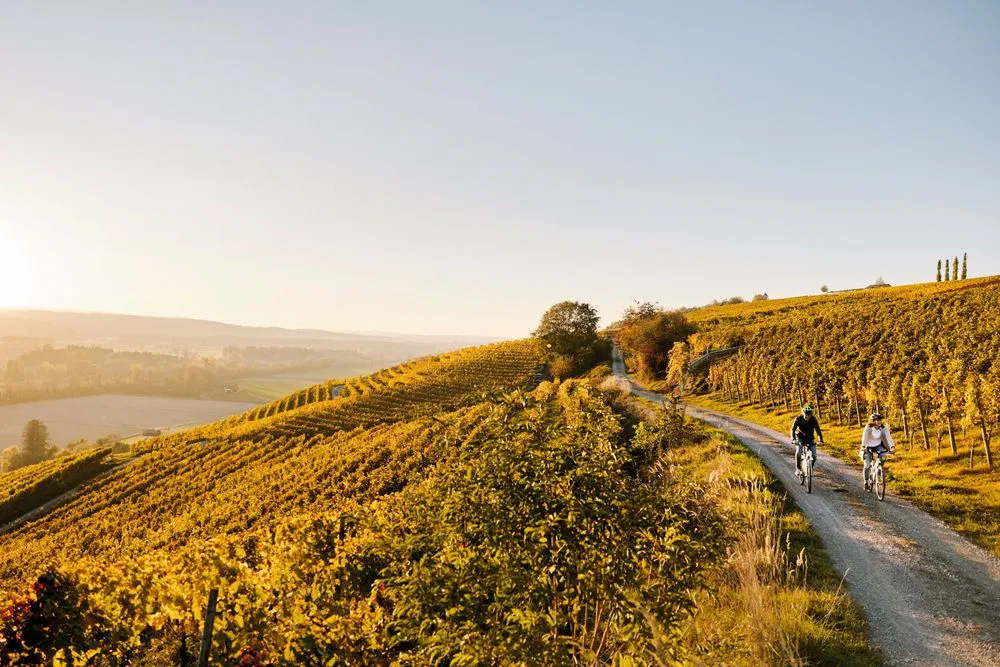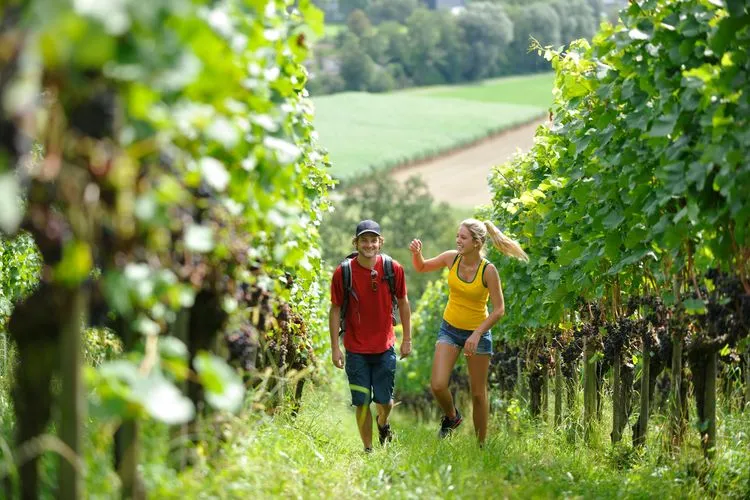Around 200 years ago, viticulture in the young canton of Thurgau covered more than 2,000 hectares, forming an almost continuous belt along the shores of Lake Constance and the Rhine, extending into the various valleys. Today, only a small fraction of this remains.
Thurgau’s mild and balanced climate owes much to the influence of Lake Constance and the Rhine. The region’s soils vary from sandy-clay with some limestone to deep moraine soils. The white wines are often aromatic, while the red wines, predominantly Pinot Noir, range from fruit-forward everyday wines to more structured barrel-aged offerings.
In 1882, Hermann Müller managed to produce a promising grape crossbreed. To distinguish it from other Müllers in the German-speaking world, it was named after his home canton, Thurgau. His creation—the "Müller-Thurgau", also known as Rivaner or Riesling-Sylvaner—became the most important grape variety in German-speaking Switzerland and is now cultivated in all 16 cantons in this region. The vineyards in the canton of Thurgau are divided into six wine regions.
